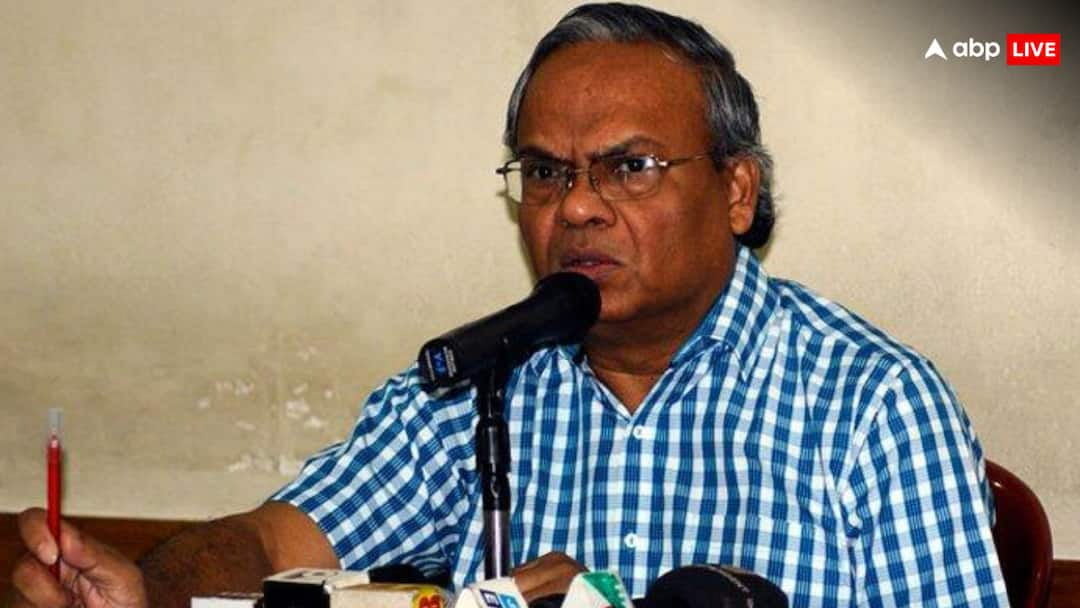- July 11, 2023
Monsoon: Monsoon fury 2023: Climate change makes extreme events new normal | India News – Times of India

India’s battle with extreme weather events has reached alarming proportions as the nation faces the wrath of the monsoon season.
The onset of 2023 was marked by scorching temperatures that shattered a 123-year-old record in February. The months that followed saw the intensification of extreme weather events. Scientists have identified the influence of climate change in exacerbating these occurrences, with April and June experiencing a heatwave that was made 30 times more likely due to global warming.
The Arabian Sea witnessed the formation of cyclone Biparjoy, which lasted a staggering 13 days, becoming the longest-duration cyclone since 1977. This exceptional event underscored the changing patterns of weather systems driven by climate change. In fact, the year 2023 has witnessed a series of unprecedented climatic phenomena, indicating a disturbing new normal caused by climate change.
At present, Northwest India is grappling with the aftermath of incessant and torrential rainfall. Flash floods and landslides have wreaked havoc across Himachal Pradesh, while Delhi recorded the highest rainfall in four decades. Experts, including meteorologists and climate scientists, unanimously attribute the surge in extreme weather events to the escalating levels of global warming.
Mahesh Palawat, Vice-President of Meteorology and Climate Change at Skymet Weather, explained, “The ongoing spell of extremely heavy rains is due to the alignment of three weather systems: the Western Disturbance over the Western Himalayas, the cyclonic circulation over the northwestern plains, and the Axis of Monsoon trough running across the Indo-Gangetic Plains. While this alignment is not unprecedented, the impact of climate change has amplified the intensity of these events.”
Numerous reports and research studies have already established the profound impact of climate change on Indian monsoon patterns. However, scientists have also identified other factors that are compounding the implications of global warming.
Dr. Raghu Murtugudde, an Earth System Scientist and Visiting Professor at IIT-Bombay, elaborated on these factors, stating, “Apart from global warming, other contributors to extreme weather events in 2023 include the El Nino phenomenon, larger areas affected by wildfires releasing increased carbon into the atmosphere, warmer phases in the North Atlantic Ocean, and exceptional warming in the Arabian Sea. Additionally, unusual upper-level circulation patterns are affecting local surface circulations, resulting in the heavy rains witnessed across north and central India.”
The Ministry of Earth Sciences report, ‘Assessment of Climate Change over the Indian Region,’ highlights that future monsoonal rainfall is projected to become more intense and affect larger areas due to increased atmospheric moisture content resulting from temperature rise. The frequency of localized heavy rainfall occurrences has significantly increased over central India, attributed in part to changes in moisture availability due to greenhouse gas-induced warming, aerosols, atmospheric stability, and urbanization. Global and regional models also predict increased seasonal mean rainfall over India, along with a weakening monsoon circulation.
The rise in average temperatures, decreased monsoon precipitation, increased frequency of extreme temperature and rainfall events, droughts, rising sea levels, and intensified cyclones observed since the mid-twentieth century serve as compelling scientific evidence of the influence of human activities on regional climate changes.
Krishnan Raghavan, Scientist-G and Director of the Indian Institute of Tropical Meteorology (IITM), emphasized the significance of increased evaporation resulting from rising global surface and ocean temperatures. He explained, “The Indo-Gangetic plains receive significant moisture from the Bay of Bengal and the Arabian Sea. This continuous moisture supply contributes to increased rainfall, ultimately leading to extreme weather events.”
Dr. Raghavan further highlighted the need for research on other global factors that impact circulations affecting Indian weather. “Arctic amplification, characterized by the alarming heating of polar regions and subsequent glacial ice melt, can significantly influence mid-latitude and tropical atmospheric circulation patterns. Although further research is required, we cannot disregard its potential contribution to changing weather patterns in India,” he said.
The Intergovernmental Panel on Climate Change (IPCC) report, ‘Weather and Climate Extreme Events in a Changing Climate,’ had already warned of increased summer and monsoon precipitation, along with a 20 percent surge in extreme rainfall events on the Indian subcontinent. The report projected incessant and erratic rainfall leading to floods, intensified cyclonic events, and higher likelihoods of unprecedented extreme events with increased intensities, durations, and spatial extents.
The warming of the western Indian Ocean has been linked to a surge in moisture surges on low-level monsoon westerlies toward the Indian subcontinent, resulting in an increase in precipitation extremes over central India. Central India has experienced a significant increase in heavy rainfall (over 100 mm per day) and a notable decrease in moderate rainfall (5–100 mm per day) during the South Asian monsoon season. Flood frequency and magnitude have increased in southeastern and northern Asia, including India.
Analyses conducted by the Council on Energy, Environment, and Water (CEEW) indicate that India has witnessed over 478 extreme events since 1970, with a notable acceleration in their frequency after 2005. The period from 1970 to 2005 recorded an average of 250 extreme events, while the post-2005 period witnessed a surge to 310 extreme events and associated occurrences. These empirical findings align with the weakening of monsoons due to rising micro-temperatures.
The impact of these abrupt climate shifts extends beyond the frequency of events, with the intensity of associated occurrences skyrocketing. The compounding effects of climate change pose unprecedented challenges to human and natural ecosystems, impacting economic activities and posing severe threats to livelihoods.
While efforts to combat climate change have escalated at regional, national, and subnational levels, the rapid compounding of climate change impacts necessitates urgent and comprehensive action. Without a concerted global response, India and other nations will continue to bear the brunt of extreme weather events, risking lives, infrastructure, and socio-economic stability.
The onset of 2023 was marked by scorching temperatures that shattered a 123-year-old record in February. The months that followed saw the intensification of extreme weather events. Scientists have identified the influence of climate change in exacerbating these occurrences, with April and June experiencing a heatwave that was made 30 times more likely due to global warming.
The Arabian Sea witnessed the formation of cyclone Biparjoy, which lasted a staggering 13 days, becoming the longest-duration cyclone since 1977. This exceptional event underscored the changing patterns of weather systems driven by climate change. In fact, the year 2023 has witnessed a series of unprecedented climatic phenomena, indicating a disturbing new normal caused by climate change.
At present, Northwest India is grappling with the aftermath of incessant and torrential rainfall. Flash floods and landslides have wreaked havoc across Himachal Pradesh, while Delhi recorded the highest rainfall in four decades. Experts, including meteorologists and climate scientists, unanimously attribute the surge in extreme weather events to the escalating levels of global warming.
Mahesh Palawat, Vice-President of Meteorology and Climate Change at Skymet Weather, explained, “The ongoing spell of extremely heavy rains is due to the alignment of three weather systems: the Western Disturbance over the Western Himalayas, the cyclonic circulation over the northwestern plains, and the Axis of Monsoon trough running across the Indo-Gangetic Plains. While this alignment is not unprecedented, the impact of climate change has amplified the intensity of these events.”
Numerous reports and research studies have already established the profound impact of climate change on Indian monsoon patterns. However, scientists have also identified other factors that are compounding the implications of global warming.
Dr. Raghu Murtugudde, an Earth System Scientist and Visiting Professor at IIT-Bombay, elaborated on these factors, stating, “Apart from global warming, other contributors to extreme weather events in 2023 include the El Nino phenomenon, larger areas affected by wildfires releasing increased carbon into the atmosphere, warmer phases in the North Atlantic Ocean, and exceptional warming in the Arabian Sea. Additionally, unusual upper-level circulation patterns are affecting local surface circulations, resulting in the heavy rains witnessed across north and central India.”
The Ministry of Earth Sciences report, ‘Assessment of Climate Change over the Indian Region,’ highlights that future monsoonal rainfall is projected to become more intense and affect larger areas due to increased atmospheric moisture content resulting from temperature rise. The frequency of localized heavy rainfall occurrences has significantly increased over central India, attributed in part to changes in moisture availability due to greenhouse gas-induced warming, aerosols, atmospheric stability, and urbanization. Global and regional models also predict increased seasonal mean rainfall over India, along with a weakening monsoon circulation.
The rise in average temperatures, decreased monsoon precipitation, increased frequency of extreme temperature and rainfall events, droughts, rising sea levels, and intensified cyclones observed since the mid-twentieth century serve as compelling scientific evidence of the influence of human activities on regional climate changes.
Krishnan Raghavan, Scientist-G and Director of the Indian Institute of Tropical Meteorology (IITM), emphasized the significance of increased evaporation resulting from rising global surface and ocean temperatures. He explained, “The Indo-Gangetic plains receive significant moisture from the Bay of Bengal and the Arabian Sea. This continuous moisture supply contributes to increased rainfall, ultimately leading to extreme weather events.”
Dr. Raghavan further highlighted the need for research on other global factors that impact circulations affecting Indian weather. “Arctic amplification, characterized by the alarming heating of polar regions and subsequent glacial ice melt, can significantly influence mid-latitude and tropical atmospheric circulation patterns. Although further research is required, we cannot disregard its potential contribution to changing weather patterns in India,” he said.
The Intergovernmental Panel on Climate Change (IPCC) report, ‘Weather and Climate Extreme Events in a Changing Climate,’ had already warned of increased summer and monsoon precipitation, along with a 20 percent surge in extreme rainfall events on the Indian subcontinent. The report projected incessant and erratic rainfall leading to floods, intensified cyclonic events, and higher likelihoods of unprecedented extreme events with increased intensities, durations, and spatial extents.
The warming of the western Indian Ocean has been linked to a surge in moisture surges on low-level monsoon westerlies toward the Indian subcontinent, resulting in an increase in precipitation extremes over central India. Central India has experienced a significant increase in heavy rainfall (over 100 mm per day) and a notable decrease in moderate rainfall (5–100 mm per day) during the South Asian monsoon season. Flood frequency and magnitude have increased in southeastern and northern Asia, including India.
Analyses conducted by the Council on Energy, Environment, and Water (CEEW) indicate that India has witnessed over 478 extreme events since 1970, with a notable acceleration in their frequency after 2005. The period from 1970 to 2005 recorded an average of 250 extreme events, while the post-2005 period witnessed a surge to 310 extreme events and associated occurrences. These empirical findings align with the weakening of monsoons due to rising micro-temperatures.
The impact of these abrupt climate shifts extends beyond the frequency of events, with the intensity of associated occurrences skyrocketing. The compounding effects of climate change pose unprecedented challenges to human and natural ecosystems, impacting economic activities and posing severe threats to livelihoods.
While efforts to combat climate change have escalated at regional, national, and subnational levels, the rapid compounding of climate change impacts necessitates urgent and comprehensive action. Without a concerted global response, India and other nations will continue to bear the brunt of extreme weather events, risking lives, infrastructure, and socio-economic stability.







